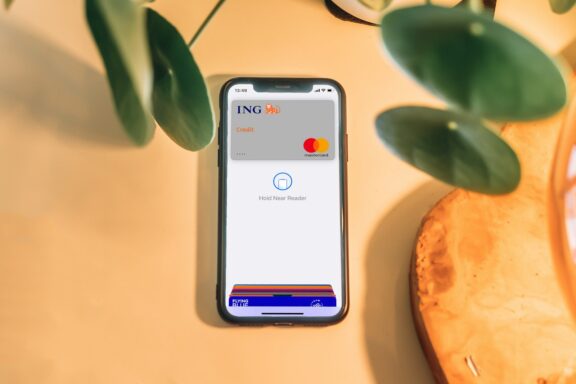Blockchain technology is transforming how data is stored, shared, and secured across various industries. In this beginner’s guide, we provide a comprehensive overview of blockchain technology, covering its key concepts, real-world applications, benefits, and challenges. By understanding the inner workings of blockchain, readers can grasp how this innovative technology is reshaping the digital landscape.
A Beginner’s Guide to Blockchain Technology
What is Blockchain Technology?
Blockchain is a decentralized ledger technology that records transactions securely and transparently. It’s like an online diary where every transaction is publicly visible but cannot be altered once recorded. This tamper-proof nature of blockchain makes it highly secure and trustworthy for various applications beyond digital currencies.
History of Blockchain: From Bitcoin to Innovation
Blockchain technology first gained widespread attention in 2008 with the creation of Bitcoin by the pseudonymous Satoshi Nakamoto. Since then, blockchain has evolved into a transformative technology with applications spanning industries such as finance, supply chain management, healthcare, and more.
How Blockchain Works: The Basics
Decentralized Network
Blockchain eliminates the need for a central authority. In a blockchain network, data is stored across a global network of computers (also known as nodes), ensuring resilience and reducing the risk of fraud.
Consensus Mechanisms
To add a new block to the blockchain, network nodes must agree on the validity of the transaction. This process is done through consensus mechanisms, with the most common being Proof of Work (PoW) and Proof of Stake (PoS).
Key Components of Blockchain
Blocks and Chains
Each block in the blockchain contains a group of validated transactions. Once added, these blocks form an immutable chain, ensuring that data cannot be tampered with or changed retroactively. This creates a transparent and permanent record of transactions.
Cryptographic Hash Functions
Blockchain uses advanced cryptography to secure data. Cryptographic hash functions create unique identifiers for each block, ensuring the integrity of the data. Even a small change in the block will alter its hash, alerting the entire network.
Applications of Blockchain Technology
Blockchain in Financial Services
Blockchain has disrupted the financial services sector by enabling faster, cheaper, and more secure transactions. Beyond cryptocurrencies like Bitcoin and Ethereum, blockchain technology is also being used for cross-border payments, remittances, and smart contracts.
Blockchain for Supply Chain Management
One of the most exciting applications of blockchain is in supply chain management. Blockchain can track the movement of goods from farm to table, providing transparency and ensuring product authenticity. This reduces fraud, counterfeiting, and unethical practices in industries like food, pharmaceuticals, and luxury goods.
Benefits and Challenges of Blockchain Technology
Benefits of Blockchain
The key benefits of blockchain technology include:
- Security: Blockchain’s decentralized nature makes it highly secure, reducing the risk of data breaches and fraud.
- Transparency: Transactions are publicly recorded, offering unparalleled transparency.
- Efficiency: Blockchain eliminates intermediaries, which reduces transaction costs and speeds up processes.
- Trust: Its immutable ledger fosters trust among users, especially in industries like finance and healthcare.
Challenges of Blockchain
Despite its potential, blockchain faces several challenges:
- Scalability: The decentralized nature of blockchain can slow down transaction speeds, especially in high-volume networks.
- Energy Consumption: Certain consensus mechanisms like Proof of Work (PoW) require a significant amount of energy, raising environmental concerns.
- Regulatory Uncertainty: The rapidly evolving nature of blockchain technology has led to challenges in creating comprehensive regulatory frameworks.
- Complexity: The technical complexity of blockchain can pose barriers for businesses and individuals unfamiliar with the technology.
Cryptocurrency and Blockchain: The Connection
Blockchain is the underlying technology behind most cryptocurrencies, including Bitcoin and Ethereum. Cryptocurrencies use blockchain to record transactions securely, providing a decentralized alternative to traditional banking systems. Transactions are verified by nodes through cryptographic processes, ensuring the integrity of the network.
The Future of Blockchain Technology
Emerging Trends in Blockchain
The future of blockchain technology is full of exciting possibilities:
- Tokenization: Blockchain will allow the tokenization of physical and digital assets, such as real estate, art, and commodities. This will open up new investment opportunities and enhance liquidity.
- Smart Contracts: Smart contracts are self-executing contracts where the terms of the agreement are written into code. These contracts will automate complex processes, saving time and money while enhancing security.
- Interoperability: Blockchain networks are becoming more interoperable, allowing for seamless communication between different blockchains. This will improve efficiency and reduce silos in industries like finance, healthcare, and logistics.
Conclusion: The Impact of Blockchain on the Digital Future
Blockchain technology is more than just a buzzword. It has the potential to revolutionize how we handle data, conduct transactions, and ensure security across industries. As blockchain technology continues to evolve and find new applications, understanding its key concepts and benefits will be crucial for businesses, developers, and consumers alike.
Stay informed and prepared to embrace the future of blockchain technology as it continues to disrupt traditional systems and unlock new possibilities for the digital age.
Frequently Asked Questions (FAQ)
- What makes blockchain technology secure?
Blockchain’s security comes from its decentralized nature, cryptographic hashing, and consensus mechanisms. Each transaction is publicly recorded and cannot be altered without the consensus of the network. - Can blockchain be used for purposes other than cryptocurrencies?
Yes, blockchain technology has applications beyond cryptocurrencies. It’s used in supply chain management, healthcare, finance, voting systems, and more to increase transparency, security, and efficiency. - How does blockchain ensure transparency in transactions?
Blockchain ensures transparency by recording all transactions on a public ledger that is accessible to all participants in the network. Once a transaction is added to the blockchain, it cannot be changed or tampered with.








No Comments